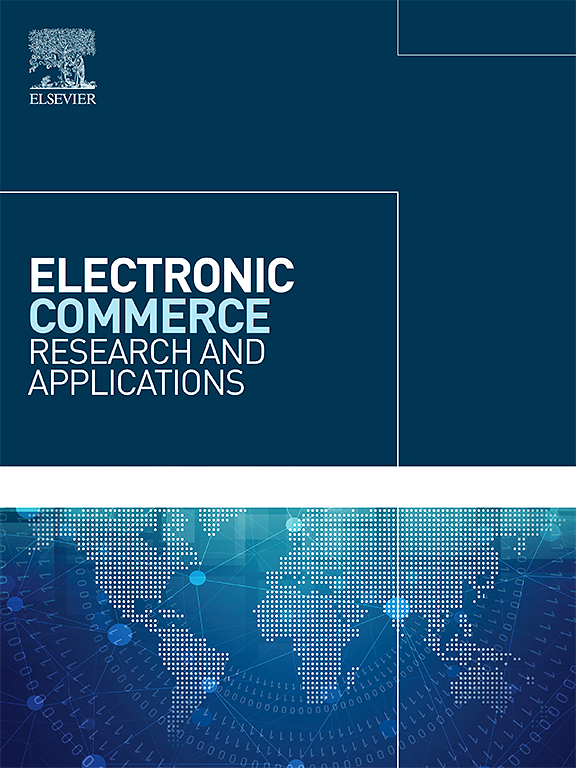Physical stores versus physical showrooms: Channel structures of online retailers
IF 5.9
3区 管理学
Q1 BUSINESS
Electronic Commerce Research and Applications
Pub Date : 2024-11-01
DOI:10.1016/j.elerap.2024.101458
引用次数: 0
Abstract
To meet consumers’ expectations for experiential shopping, an increasing number of online retailers are expanding offline channels, with physical showrooms and physical showrooms emerging as the two most popular offline channel modes. Both channels can match consumers’ demand for on-site experiences. However, the two modes differ in terms of service cost, demand promotion efficiency, and channel differentiation generation. The article considers three channel structures: single online channel, online channel with physical store, and online channel with physical showroom, as well as two scenarios: non-competitive and competitive. This study examines whether online retailers should integrate offline channels and which offline channel mode they should use by comparing the profit changes of themselves and rivals when three channel structures are adopted in two scenarios. It is found that: (i) If there is a significant difference between the online and physical store channels, providing physical stores help online retailer raise profits. If the physical showroom is highly effective at promoting demand, omnichannel retailers will dominate the entire online market, and expanding physical showrooms is always profitable; (ii) Whether in a competitive or non-competitive environment, online retailers should weigh channel differentiation and the efficiency of the offline channel modes in promoting demand to select the best channel mode; (iii) Due to channel differentiation, online retailers’ creation of physical stores, as well as increasing competition among physical stores, will have no impact on rival retailers. However, providing physical showrooms will result in lower sales volume and revenue for rival retailers.
实体店与实体陈列室:在线零售商的渠道结构
为了满足消费者对体验式购物的期望,越来越多的在线零售商开始拓展线下渠道,其中实体展厅和实体陈列室成为最受欢迎的两种线下渠道模式。这两种渠道都能满足消费者对现场体验的需求。然而,这两种模式在服务成本、需求促进效率和渠道差异化生成方面存在差异。文章考虑了三种渠道结构:单一在线渠道、在线渠道与实体店、在线渠道与实体展厅,以及两种情景:非竞争和竞争。本研究通过比较两种情景下采用三种渠道结构时自身和对手的利润变化,探讨在线零售商是否应该整合线下渠道,以及应该采用哪种线下渠道模式。研究发现(i) 如果线上渠道和实体店渠道之间存在显著差异,提供实体店有助于在线零售商提高利润。如果实体展厅在促进需求方面非常有效,全渠道零售商将主导整个线上市场,扩大实体展厅总是有利可图的;②无论是在竞争环境还是非竞争环境下,网络零售商都应权衡渠道差异化和线下渠道模式在促进需求方面的效率,以选择最佳渠道模式;③由于渠道差异化,网络零售商开设实体店以及实体店之间竞争的加剧不会对竞争对手零售商产生影响。然而,提供实体展厅会导致竞争对手零售商的销售量和收入下降。
本文章由计算机程序翻译,如有差异,请以英文原文为准。
求助全文
约1分钟内获得全文
求助全文
来源期刊

Electronic Commerce Research and Applications
工程技术-计算机:跨学科应用
CiteScore
10.10
自引率
8.30%
发文量
97
审稿时长
63 days
期刊介绍:
Electronic Commerce Research and Applications aims to create and disseminate enduring knowledge for the fast-changing e-commerce environment. A major dilemma in e-commerce research is how to achieve a balance between the currency and the life span of knowledge.
Electronic Commerce Research and Applications will contribute to the establishment of a research community to create the knowledge, technology, theory, and applications for the development of electronic commerce. This is targeted at the intersection of technological potential and business aims.
 求助内容:
求助内容: 应助结果提醒方式:
应助结果提醒方式:


